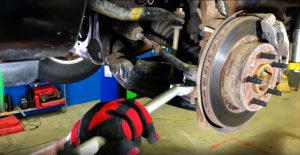
The braking system is one of the most important parts of a car when it comes to safety. Brake rotors are one of the main components of this system; they are essential to providing efficient stopping power. Drivers can better comprehend the value of brake rotors and promote regular maintenance by being aware of how they work.
The Role of Brake Rotors
Brake rotors, sometimes called brake discs, are metal disks that are fastened to a car’s wheel hubs. Hydraulic pressure triggers the brake callipers, which force the brake pads against the rotors when the brake pedal is depressed. The stopping force required to slow down or stop the vehicle is produced by this friction. As a result, rotors are crucial to the entire braking process since they operate as the surface that the brake pads make contact with.
Performance Characteristics
The state of the brake rotors has a significant impact on how well the braking system works. They ought to be strong and able to release heat produced when braking. High-performance rotors are frequently constructed from materials that are resistant to warping and extremely high temperatures. Reduced stopping power and longer stopping distances might result from worn-out, deformed, or fractured rotors that impair brake function. In extreme situations, damaged rotors may result in brake failure, endangering both drivers and passengers. Choosing the Auto Repair in San Antonio, TX based service is essential here.

Signs of Worn Brake Rotors
Maintaining a safe vehicle requires being able to recognize the early indicators of rotor degeneration. When applying the brakes, drivers may experience pulsations or vibrations, which are a classic sign that the rotors may be deformed or unevenly worn. Furthermore, strange sounds like screeching or grinding may indicate that the brake pads have worn down to the point where they are in touch with the metal rotor. Ignoring these indicators could worsen the damage and result in expensive repairs or even a total brake failure.
The Value of Continual Maintenance
Brake rotor life can be considerably increased by regular maintenance and timely inspections. The majority of auto experts’ advice examining the rotors’ condition whenever the brake pads are replaced or at regular intervals of vehicle maintenance, usually every 30,000 miles. To determine whether a rotor needs to be replaced or resurfaced, it is important to measure its thickness and look for any indications of corrosion or degradation in addition to visual inspections.
Conclusion
Brake rotors are an essential part of a car’s braking system that have a direct effect on stopping force and general safety. Drivers can make more informed judgments about repairs and replacements if they are aware of their involvement. Making brake rotor health a top priority not only improves performance but also makes driving safer and provides roadside piece of mind. Any prudent driver should prioritize maintaining the integrity of their vehicle’s braking system through routine inspections and prompt interventions.






